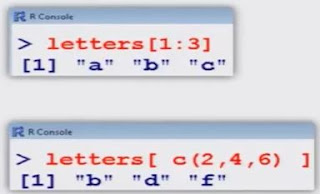→ We can change the current working directory as follows:
> setwd ("<location of the dataset>")
Example:
> setwd ("C":/RCourse/")
or
> setwd ("C:\\RCourse\\")
→ The following command returns the current working directory:
> getwd ( )
[1] "C:/RCourse/"
Importing Data Files
Suppose we have some data on our computer and we want to import it in R.
Different formats of files can be read in R
- comma-separated values (CSV) data files,
- table file (TXT)
- Spreadsheet (e.g., MS Excel) file,
- files from other software like SPSS, Minitab etc.
One can also read or upload the file from Internet site.
We can read the file containing rent index data from website:
http://home.iitk.ac.in/~shalab/Rcourse/munichdata.asc
as follows
> datamunich <- read.table (file =
"http://home.iitk.ac.in/~shalab/Rcourse/munichdata.asc", header = TRUE)
File name is munichdata.asc
Comma-seperate values (CSV) files
First set the working directory where the CSV file is located.
setwd ("<location of your dataset>")
>setwd ("C:/RCourse/")
To read a CSV file
syntax: read.CSV ("filename.CSV")
Example:
> data <- read.CSV ("examplel.CSV")
Comma-separated values (CSV) files
Example:
> data <- read.CSV ("examplel.CSV")
> data
X1 X10 X100
1 2 20 200
2 3 30 300
3 4 40 400
4 5 50 500
Notice the difference in the first rows of excel file and output
Comma-separated values (CSV) files
Data files have many formats and accordingly we have options for loading them.
If the data file does not have headers in the first row, then use
data <- read.CSV ("datafile.CSV", header=FALSE)
Comma-separated values (CSV) files
The resulting data frame will have columns named V1, V2, ...
We can rename the header names manually:
Comma-separated values (CSV) files
We can set the delimiter with sep.
If it is tab delimited, use sep="\t".
data <- read.CSV ("datafile.CSV", sep="\t")
If it is space-delimited, use sep=" ".
data <- read.CSV ("datafile.CSV", sep= " ")
Reading Tabular Data Files
Tabular data files are test files with a simple format:
- Each linee contains one record.
- Within each record, fields (items) are separated by a one-character delimiter, such as a space, tab, colon, or comma.
- Each record contains the same number of fields.
read.table function is used and it returns a data frame.
read.table ("FileName")






























































.png)


























